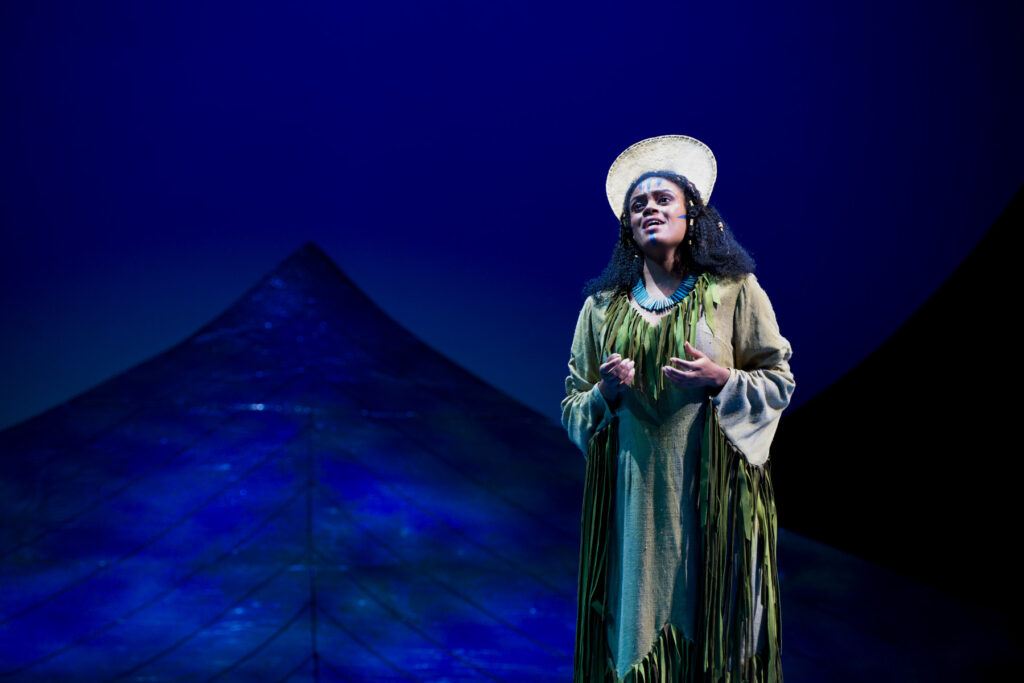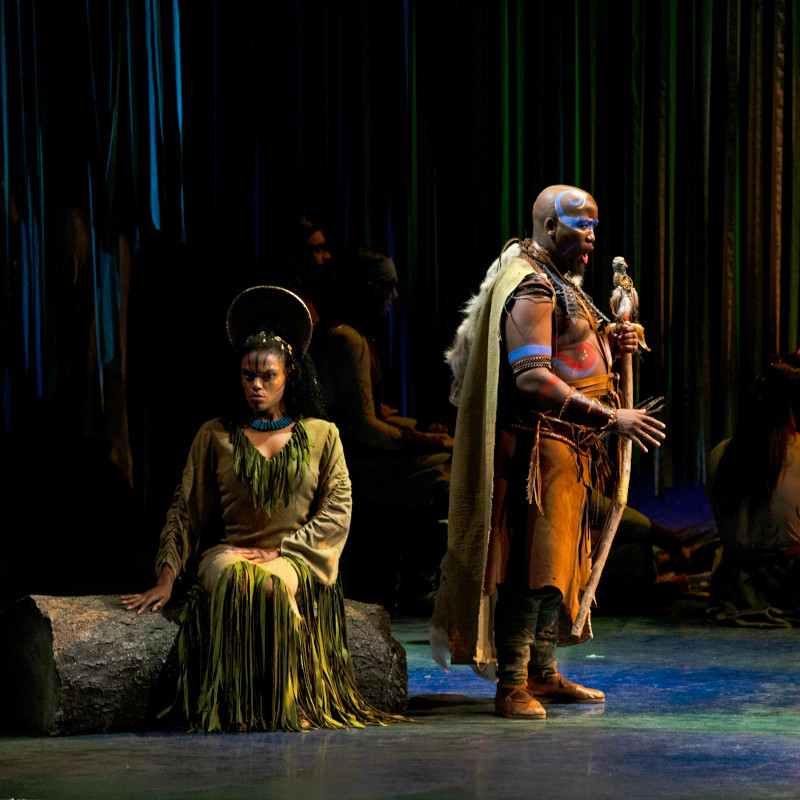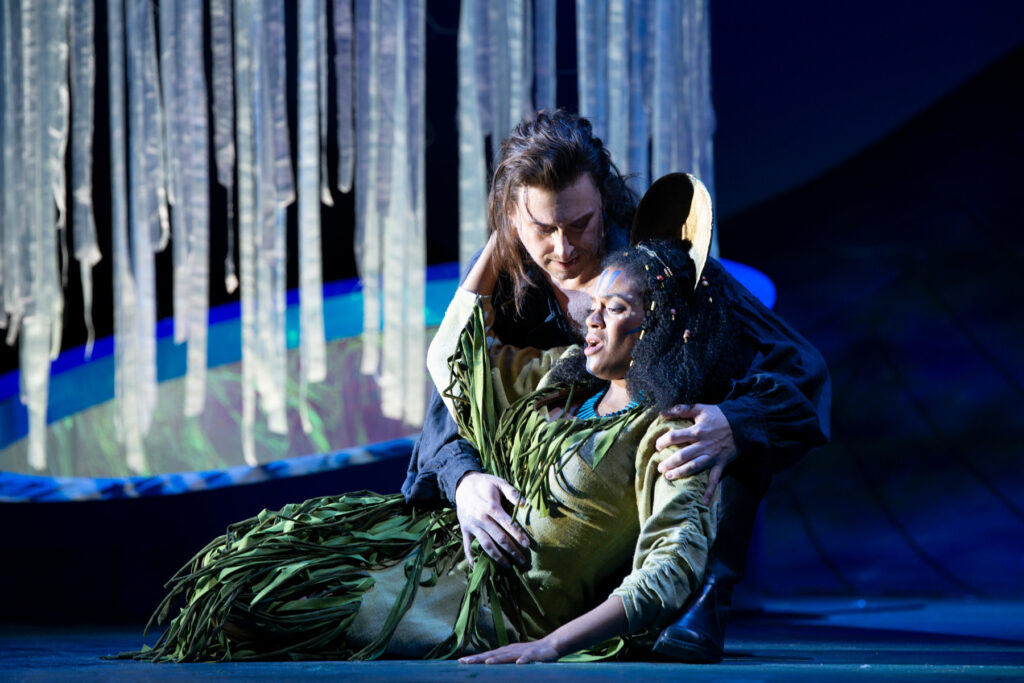The inspiration for Delius’s The Magic Fountain (1895) stems from his time in Florida, when he ran an orange plantation for his father. It was the first in a trilogy of operas that continued with the better-known and more successful Koanga and A Village Romeo and Juliet. It was never performed in Delius’s lifetime, and only emerged in the late 1990s for its first performances (in concert initially, and then staged).

The Spanish explorer Solano is on an expedition across the seas to find the legendary fountain of eternal youth in the wilderness of Florida. When he is washed up on shore, he is discovered by Watawa, a native American woman who is consumed by hatred for white men whose arrival in her land has brought trouble and destruction. Nevertheless, feelings develop between them as she takes him to her village and its chief, Wapanacki. He advises that Solano should consult the tribal seer Talum Hadjo if he truly desires to find the fountain. The sage warns that the fountain should not be sought for selfish reasons, as those who do so will die. Watawa’s attempt to dissuade Solano from pursuing his quest fails and, as she has fallen in love with him, drinks from the fountain knowing that it will kill her. Solano follows suit, and dies with her.
The scenario combines elements of both The Flying Dutchman – even if Solano’s search is initially less specific than a voyage after something or someone who will redeem him – and Turandot, with an icy but alluring woman who succumbs to the warmth of love. The result is a climax, like Tristan and Isolde, in which the two individuals achieve a transcendental oblivion, apparently superseding all conflicts and tension between them and the opposing forces they represent. However noble Delius’s aim may have been in writing this opera, a major weakness lies with his libretto which, as the Wagnerian correspondences imply, strains at philosophical and spiritual ideas which are expressed too simplistically and glibly. Dramatically, it’s not made clear why Watawa’s self-sacrificial decision to drink from the fountain doesn’t pass the test of being sufficiently worthy to benefit from it, and one wonders what would qualify as a less selfish reason, unless the point is that the fountain’s efficacy is ultimately illusory.

Christopher Luscombe’s production doesn’t answer the question, nor does it particularly attempt to elucidate or deepen character. More surprising is the decision to present the native Americans as the exotic people of traditional Western colonial representation, for example, with painted faces, and feathers in the case of Talum Hadjo, and also in a choreographed war dance. The reason appears to be a directorial decision to present the work as it might have been staged in the 1890s when the work was written, and to make it something of a period piece. The swirling, white-clad figures, like cavorting woodland nymphs in a bucolic fantasy from the Aesthetic movement, who herald the appearance of the god Unktahé, also suggest as much. Audience and readers will decide for themselves whether such a strategy is justified or acceptable in 2025.
Other aspects of the production fare better, above all the opening scene of the Spanish sailors’ lassitude, sprawled on the deck of Solano’s ship and exasperated with his adventures, which paradoxically makes for a pregnant, tense beginning that finally erupts with the storm that hurls Solano onto the Florida coast. Dimmed lighting for the journey to the fountain is suggestive, as also is the periodic lowering of a screen of tassels in creating the idea of a series of vistas to be opened up as the mysterious inner sanctum of the fountain is approached, even if the tassels themselves look like the ornamentation in a cheap disco, and some better form may have been found.

Francesco Cilluffo’s conducting of the score starts with appropriate languor and instantly conjures the magic of Delius’s compositional style, already clearly in evidence in this relatively early work. The performance by the Wexford Festival Opera Orchestra tends to remain somewhat underpowered, however, where more dynamic charge would be useful to draw contrast and development in the music, though the Chorus go a considerable way to overcome that. The strings at the opening of act two could also be tidier.
Dominick Valdés Chenes gives an emotionally committed account of Solano if somewhat dry in tone. The imperious Watawa he encounters is forcefully sung by Axelle Saint-Cirel, encompassing a rich range of timbre and vibrato. Kamohelo Tsotetsi embodies vigorous authority as Wapanacki, giving way to Meilir Jones’s more nuanced voice of wisdom as the seer, Talum Hadjo.
It’s always a privilege to have the opportunity to experience works as rare as this, which it remains Wexford’s laudable mission to promote. Only diehard Delius fans, however, will find this opera truly rewarding, its attractions remaining as elusive as the fountain for everybody else.
Curtis Rogers
The Magic Fountain
Composer and Libretto: Frederick Delius
Cast and production staff:
Solano – Dominick Valdés Chenes; Watawa – Axelle Saint-Cirel; Wapanacki – Kamohelo Tsotetsi; Talum Hadjo – Meilir Jones; A Spanish Sailor – Seamus Brady
Director – Christopher Luscombe; Set & Costume Designer – Simon Higlett; Choreographer – Amy Share Kissov; Lighting Designers – Daniele Naldi & Paolo Bonapace; Conductor – Francesco Cilluffo; Chorus of Wexford Festival Opera; Wexford Festival Opera Orchestra
Wexford Festival Opera, National Opera House, Wexford, Ireland, Sunday 19 October 2025
All photos by Pádraig Grant